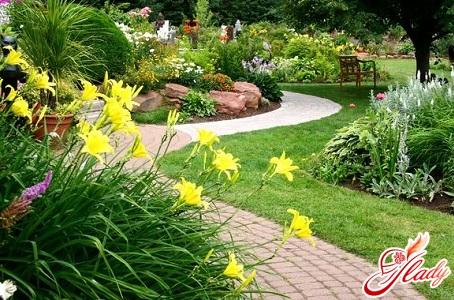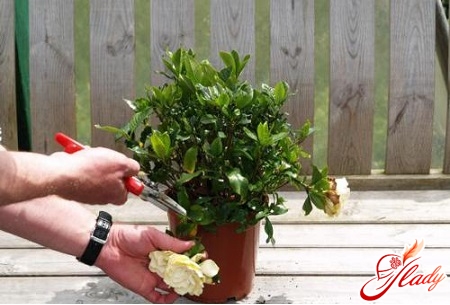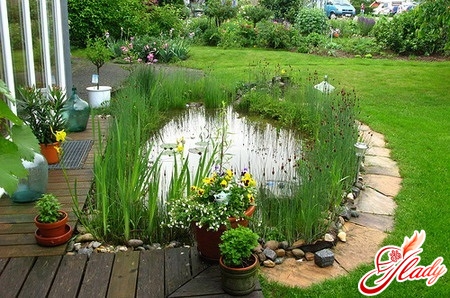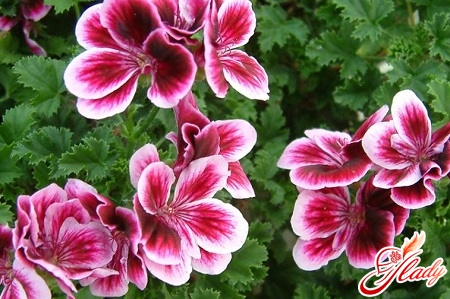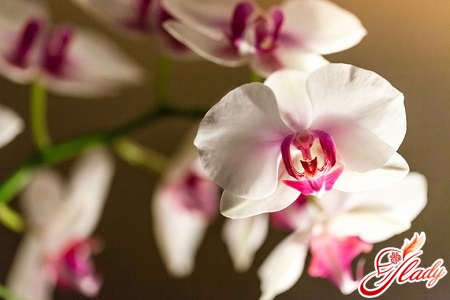 Few can resist the exquisite beautyorchids. And the most frequent visitor of urban apartments is phalaenopsis mix (phalaenopsis) - a plant from the genus epiphytic. Despite the fact that many beginner growers are afraid to acquire this flower, it is far from as picky as it might seem at first glance. Let's consider what care for orchids growing at home is considered correct. And also try to understand all the subtleties of their cultivation.
Few can resist the exquisite beautyorchids. And the most frequent visitor of urban apartments is phalaenopsis mix (phalaenopsis) - a plant from the genus epiphytic. Despite the fact that many beginner growers are afraid to acquire this flower, it is far from as picky as it might seem at first glance. Let's consider what care for orchids growing at home is considered correct. And also try to understand all the subtleties of their cultivation.
General information on home-made orchids
Buying phalaenopsis in a regular store, youbecome the owner of a hybrid plant, fully adapted for life and flowering at home. Such an orchid can have any color: from dark purple to white, with various specks and veins. Depending on the general condition, the orchid has a different number of peduncles and flowers on them - usually from 3 to 40 buds. Most often sold specimens that bloom without a smell. Phalaenopsis is an orchid that loves strong air humidity and a high temperature regime. Therefore, care for such orchids first of all is in the properly selected room and watering. Ideally, the daytime air temperature should be up to 24 degrees, and at night to 18. Scattered sunlight and high humidity - in these conditions you will achieve flowering very soon.
How correctly to transplant?
It is necessary to transplant Phalaenopsis every 2-3 years. During this time, the substrate has time to fully expend all its useful properties. From frequent irrigation it breaks the pH, the bark begins to decompose and no longer passes air. And if you have regularly fertilized phalaenopsis, then the soil becomes very saline, which has a bad effect on plant growth. For transplantation, it is best to choose the time when the plant enters a period of new growth. It is then that the orchid begins to build up new roots. It is highly recommended not to transplant Phalaenopsis during flowering or just before it. For these plants, the best plastic pots are best. Clay containers absorb water, so in the future it will be difficult to care for orchids (namely - to perform the correct watering). The first thing we do is take the phalaenopsis out of the old soil. Now you need to clean the roots of the old bark and ground to make a thorough inspection for the presence of rot and dead areas. To do this, place phalaenopsis in a container of warm water and leave for 30-40 minutes. Before planting, you need to untangle the roots, moving them with your fingers right in the water. Periodically drain the dirty water and rinse the roots with a shower. Do not try to wash the substrate from the roots completely, some pieces of bark that have grown into roots, it is better to leave, so as not to damage the entire root system. After this, remove all dry or rotten roots. Note, if the root is damaged partially - remove only the desired area up to a healthy tissue. It will differ in color and texture. The remaining roots must be disinfected with green or iodine. After thoroughly dry the plant and proceed to planting. Ground can be made by yourself or bought. By the way, the finished mixture contains everything necessary for successful growth and flowering. The pot is chosen based on the size of the root system: if the orchid enters the pot with all roots and still has a couple of centimeters of free space around, you can safely transplant it into such a container. Beginners are advised to transplant phalaenopsis in a transparent pot. So it will be easier to care for orchids in the future: monitor the condition of the roots and prevent their decay or drying out. Given that the phalaenopsis orchid is a monopodial plant and has only one growth point, it should be placed in the middle in the pot. However, if you notice that your beauty is trying to become a "sluggard", you should not level it with artificial methods. Most likely, this is a feature of its structure and in due course it will still be located as it is convenient. What kind of care is needed for the air roots of orchids? This question confounds any beginner florist. The answer to it is quite simple - you do not need to do anything. Of course, you can bury them in the ground with a transplant. But the nature of this flower is such that over time, air roots again grow in it. Sooner or later, phalaenopsis loses all the leaves and roots that are at the bottom. In this case, simply transplant it, then prikopaevye air roots in the ground. And do not worry, very soon you will again wait for flowering. 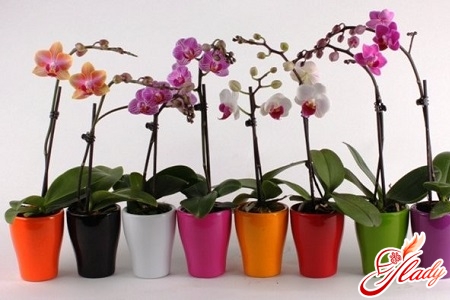
Proper watering
It is believed that the phalaenopsis orchid is sick because ofincorrect watering. This is true, but only partly. Proper care for orchids is the right choice of the ratio between watering, lighting and ambient temperature. Remember, the higher the temperature and lighting, the more frequent and abundant watering should be! Water is involved in the formation of new plant cells. The lighter the orchid becomes, the faster the process of photosynthesis and, consequently, the growth. In conditions of sufficient watering, but poor lighting, the orchid will begin to "eat" the lower leaves and roots, taking water from old tissues to grow new ones. The result is withered, yellowed leaves and no flowering. It may seem that the phalaenopsis orchid should not be watered at all, because it already has a closed growth cycle. But this statement is fundamentally not true. Part of the water in the process of life will evaporate into the environment. After the plant has spent all its water resources, it will simply perish from exhaustion. If your goal is to achieve flowering, learn how to water phalaenopsis correctly. For this, there is no need to develop any specific irrigation algorithm. Water procedures should be arranged on the basis of conditions of detention. Let's look at a few recommendations that will help you decide on watering:
- Stick in the pots with orchids woodensticks. As soon as you have a desire to water Phalaenopsis, take them out and look at the degree of humidity. If the sticks are completely dry - it's time to water, and if somewhere in the middle there are still traces of moisture - it means it's too early;
- Take the pot in your hands immediately after watering and try to remember its weight. So in the future, and guided by the weight of the pot;
- If an orchid has appeared recently, and you do not know when it was watered for the last time, try digging the ground a little with your finger and see how moist it is in the middle.
If you find that the roots of orchids have begunrot, although they are sure that they watered the plant exclusively according to the rules, then - it does not have enough light. Yes, and in general, it is precisely the right lighting that will give you an almost 100% guarantee that phalaenopsis will grow successfully - both before flowering and after it. Many years of practice shows that one of the most optimal options for watering and cleaning a plant from dust is a hot shower (water temperature of about 32-40 degrees). This way of caring for orchids can completely remove dust from the stomata of the plant and normalize gas exchange. Phalaenopsis thanks for this bathing with an excellent build-up of green mass and abundant flowering. It is a pleasure to look after such a plant!
Phalaenopsis does not blossom, what should I do?
Proper care for phalaenopsis orchidsaccompanied by a constant release of buds. If, after flowering, more than a year has passed, and the orchid does not even give you a hint of being ready to please you again, it means that one of the problems described below is taking place.
- Perhaps phalaenopsis is sick or in a state of severe stress;
- Maybe the roots are diseased or the substrate does not fit;
- There are no optimal conditions of maintenance: first of all, lighting is not suitable. To phalaenopsis flowered, it is enough to adjust the ratio between watering and light.
Do not wait for flowers in the near future, if you haveplants severely damaged root system. Now all the forces of the flower will be directed to its restoration. The same rule applies when the growth point is damaged. In this case, you just have to look after the orchid and wait until it comes back to normal. In general, a healthy plant blossoms almost all the year round, of course, under the condition of sufficient lighting. 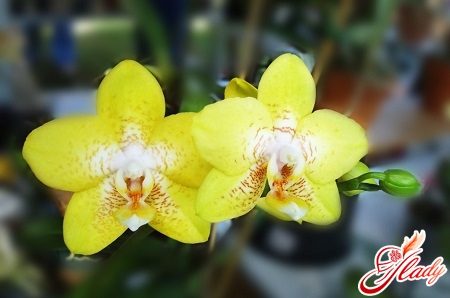
Care after flowering
How to care for an orchid after flowering? Before thinking about this issue, it is necessary to understand when in fact the plant has faded. Each flower stem of a plant does not end with buds, but with a small growing tip. While it's green, chances are that the flowering will continue. Buds can appear as they bloom or a month later. To say exactly when this happens (and whether it will happen at all) is quite difficult. You can remove the flower spike if the tip is yellow, withered, or dropped. It is then that we can say with certainty that the phalaenopsis orchid has faded. The flower stem is removed either completely (under the base itself) or partially - only where there were flowers. The fact is that there are a lot of sleeping points on it, which in time can go to growth and give either one more side flower bud or a baby. How to act in this case, it's up to you, because no one will give a guarantee that the saved flower stalk will give the process. But he can slow down the development of new buds.
Reproduction of domestic orchids
At home phalaenopsis orchidpropagates vegetatively, that is, by separating the children - the lateral processes. They appear their sleeping buds on pedicels and are ready for transplantation after they develop their own roots (about 5 pieces). Care for young orchids is the same as for adults. One large plant can be divided if it is in excellent condition and has many air roots. But it makes sense if you are certain that there are still living kidneys in the base of the old trunk. To check it it is simple: if the peduncles have already grown from the sinuses between the leaves, then this orchid can not simply give the children. After such a separation, you will have a sick plant that is incapable of growth. And, most likely, no care here will not help. Phalaenopsis is not in vain considered the most unpretentious orchid. As already mentioned above, he perfectly suits at home and pleases the owners with abundant flowering. Therefore, if you are just starting to practice orchids, we recommend that you buy this particular kind. And after boldly can settle in your house and other tropical beauties. The main thing is to provide the plants with the right care, and, believe me, you will quickly learn! We advise you to read:




